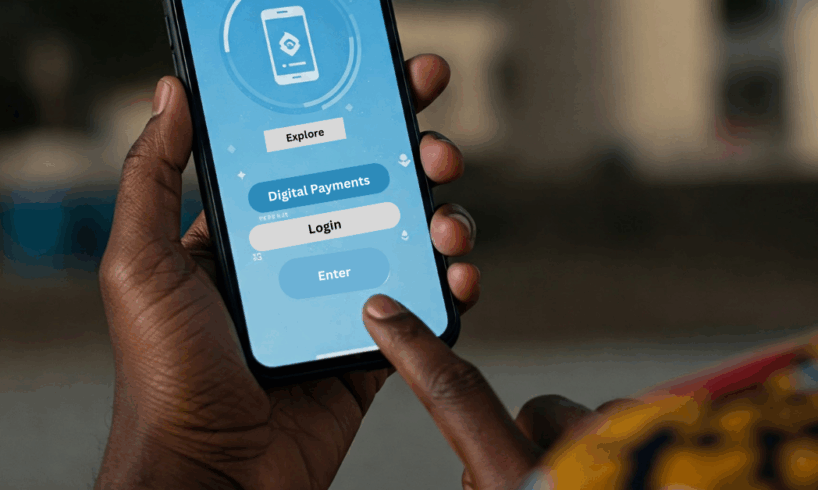
Guaranty Trust Holding Company Plc’s HabariPay is mirroring its parent’s obsession with cost control, operating at just 30.69% of its income, compared to Hydrogen’s (Access Holdings) 78.66% and Zest’s (Stanbic IBTC) 78.23% in the first nine months of 2025.
This is as bank-backed fintechs made a combined ₦7.91 billion ($5.43 million) profit in the period, their strongest collective showing since banks entered the fintech race, according to their financial results.
It is a sign of maturity from fintechs whose parent companies have been accused of being too slow, too rigid, and too distracted to compete with the speed and reliability of the likes of OPay, PalmPay, and Moniepoint.
The gains were driven by cost efficiency, rising transaction volumes and values, and deeper uptakes among merchants, corporates, and everyday users increasingly leaning on bank-backed digital channels. It is also the first time all three fintech subsidiaries are profitable in the same period, with Zest flipping from losses to its first-ever profit in Q3.
For years, fintechs like OPay and PalmPay set the pace with speed, cheap transfers, and reliability as traditional banks struggled. Now, backed by deep customer bases, settlement networks, and improving infrastructure, bank-owned fintechs are beginning to close the gap.
The Efficiency Gap
How much profit did bank-fintechs make, and how much did it cost them to make it?
Total Profit
Cost to Run
Showing net profit in Billions (₦) for 9 Months.
Hydrogen
Access Holdings
₦0.83bn
Zest
Stanbic IBTC
₦0.54bn
💡
HabariPay is dominating profit, accounting for 82% of the total earnings among the three major bank-led fintechs.
Source: 9M 2025 Company Financial Statements
TECHCABAL
Hydrogen’s profit slump
Hydrogen posted ₦833 million ($571,832.61) in profit, down 42.63% year-on-year. Operating income increased by 0.95% to ₦5.74 billion ($3.94 million), while operating expenses rose 6.64% to ₦4.52 billion ($3.10 million).
Launched in September 2022, Hydrogen started out as a backend payments and infrastructure provider serving fintechs, banks, and telcos. It turned profitable in Q4 2023.
Hydrogen is currently processing more transactions than ever. Transaction value is up 127.93% to ₦60.4 trillion ($41.46 billion) as of September 2025. It has leveraged the introduction of the Hydrogen Payment Gateway, a payment solution that allows businesses to accept any form of online payments, in 2024, alongside improvements across switching, merchant collections, and card security, to deepen its uptake.
According to its investor’s presentation for September 2025, its market share for switching is up to 14%, and over 20,000 merchants depend on it.
Zest posts first-ever profit
Stanbic IBTC’s Zest posted its first-ever profit in Q3, ₦543 million ($372,755.23), a full reversal from the ₦1.89 billion ($1.29 million) loss a year earlier. Operating expenses have climbed to ₦2.12 billion ($1.46 million) in Q3, a 6.53% increase from what it spent in 2024.
In H1 2025, Zest posted a loss after tax of ₦389 million ($267,038.28), a decline from ₦945 million ($648,717.67) a year earlier, as it shed losses. Revenue grew fourteenfold to ₦874 million ($599,978.03) in H1 2025.
While Zest has shed its losses, its cost base still leaves a lot to be desired.
Get The Best African Tech Newsletters In Your Inbox
HabariPay doubles profit
HabariPay’s profit is up 115.51% to ₦6.54 billion ($4.49 million) as operating income surged 112.68% to ₦9.43 billion ($6.47 million). Even with operating expenses rising 171.61% to ₦2.89 billion ($1.98 million), it is still Nigeria’s most profitable bank-backed fintech.
HabariPay’s growth is being powered by its Squad platform, which processes payments across virtual accounts, USSD, cards, and bank transfers while also earning from switching and bill payments.
How banks got here
The Central Bank of Nigeria’s 2010 directive mandating holding company structures opened the door for banks to build non-banking subsidiaries like payments, asset management, and pensions.
GTCO launched HabariPay in June 2022 to target SMEs and retailers offering PoS, USSD, web gateways, virtual accounts, and switching services through Squad.
Access Holdings followed with Hydrogen in September 2022, targeting infrastructure, switching, and collections.
Stanbic IBTC launched Zest in October 2023 to facilitate transfers and offer a unified dashboard that integrates cards, bank transfers, mobile money, and QR codes.
Future bets
Bank-backed fintechs are leaning heavily on their parent companies’ vast user bases, a built-in advantage as digital payments continue to grow.
“Our payments subsidiary remains one of the most strategic growth engines in the Group,” said Segun Agbaje, group CEO of GTCO, in its interim report for 2025. “Transaction volumes and values across our digital platforms have grown significantly, driven by increased adoption from merchants, corporates, and retail users.”
GTCO is scaling Habari’s payment ecosystem through strategic partnerships and deeper technology integration, enabling better API connectivity, in-app payments, and cross-platform interoperability that positions its flagship product, Squad, as a trusted payment processor and core engine for digital commerce.
“Our ambition is to power the financial interactions of the future—connecting consumers and businesses across sectors in ways that are simple, intuitive, and inclusive,” Agbaje added.
Access is positioning Hydrogen for continental expansion. “While Nigeria is our launchpad, Hydrogen has pan-African ambitions,” Roosevelt Ogbonna, CEO of Access Bank, told investors in April.
Stanbic is pouring money into Zest. Its investment is up at least 85.8% since December. That funding is helping it strengthen its infrastructure and expand its payments network. Zest is positioning itself to become the payments partner for businesses, offering a single dashboard that integrates cards, bank transfers, mobile money, and QR codes.
Bank-backed fintechs are having their strongest financial year yet, but they still lack the cultural footprint of OPay, PalmPay, and Moniepoint, the names most Nigerians still associate with reliable payments.
While these bank-owned players have cracked profitability, a feat many independent fintechs are still chasing, their next challenge lies in whether they can break out from their parent groups’ shadows and influence and stand as consumer-facing brands.
Note: exchange rate used: ₦1,456.72/$





